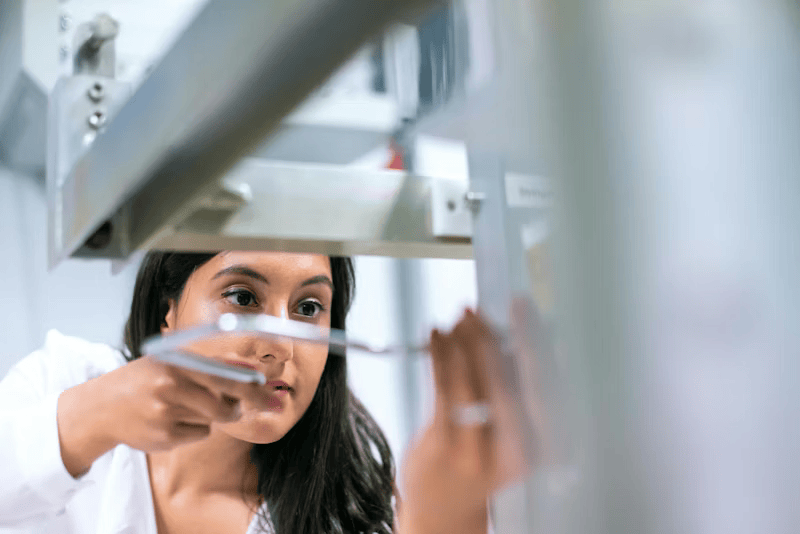Navigating the Future of Manufacturing with Industry 4.0
Many New Zealand businesses are navigating the future of manufacturing with Industry 4.0.
As the manufacturing sector rapidly evolves, technology is playing an increasingly critical role in driving efficiency, productivity, and innovation.
Industry 4.0, the fourth industrial revolution, has become a buzzword in this space, often generating both excitement and confusion.
To shed light on the state of the industry and the role of advanced technologies, Lawson Williams Specialist Recruitment spoke with Frank Phillips, an expert from Fulcrum, a platform connecting manufacturers with the right technology partners.
Understanding Industry 4.0
When asked about the significance of Industry 4.0 in manufacturing, Frank explains: “Industry 4.0 refers to the integration of technologies such as the Internet of Things (IoT), robotics, and data analytics into manufacturing processes.
These technologies promise to make manufacturing more productive and flexible. However, Industry 4.0 is also a bit of a hype term, designed to drive adoption. This can create a confusing investment environment for business leaders, as the excitement over new solutions sometimes overshadows the actual strategic needs of the business.”
He emphasises the importance of avoiding tech adoption purely for its novelty, noting that the focus should remain on how these solutions align with a company’s overarching strategy and challenges.
New Zealand’s Readiness for Advanced Manufacturing

When discussing New Zealand’s manufacturing landscape, Frank points out that geographical location is not as significant a factor as leadership mentality and industry type.
However, he notes that New Zealand businesses tend to exhibit a DIY mentality, rooted in a history of doing more with less, known as the “#8 Wire” mentality.
This mindset can sometimes hinder the adoption of advanced technologies, as businesses may be more reluctant to trust outside expertise.
“The readiness of a business for smart manufacturing is heavily influenced by its leadership mentality. New Zealand has historically been more hesitant to bring in outside experts compared to other countries,” Frank observes.“But we are seeing more businesses open to change, especially as labour shortages and rising material costs apply pressure.”
Key Drivers of Technological Adoption
So, what factors are leading businesses to explore these new technologies? According to Frank, it’s a combination of external pressures and industry-specific needs.
In sectors like food and beverage, automation is driven by the need to reduce waste and increase yields, while in engineering, tracking production data and improving traceability are key motivators.
“There’s definitely an element of ‘hype’ when it comes to technology adoption, as businesses see others implementing new solutions. But the real drivers are case-specific, whether it’s reducing energy costs or increasing production efficiency.”
The Journey to Smart Manufacturing
The journey toward adopting new technologies looks different for every business. Frank highlights that many manufacturers initially look at competitors or demos of new technology and try to apply these to their own operations. However, he advises against this approach.
“It’s critical for manufacturers to prioritise a clear business strategy before thinking about technology. The right technology should be a tool to deliver competitive advantage, not the focus of the strategy itself,” he explains.
Challenges in Investment Decisions
 While the need for new technology is clear, many manufacturers struggle with committing to these investments.
While the need for new technology is clear, many manufacturers struggle with committing to these investments.
Frank acknowledges that for small and medium-sized businesses, the perceived challenge is often budgetary. However, he points out that leadership mentality plays a significant role as well.
“It can be difficult for leaders to build a business case for technology like IoT or data analytics, as the return on investment isn’t always immediately clear. Leaders with experience in these technologies from previous roles are often more open to making the leap,” he says.
For larger businesses, the challenge shifts to future-proofing their technology for Industry 4.0 and ensuring compatibility across sites and systems. Cybersecurity also becomes a more significant concern for larger brands, given the reputational risk.
Skills for the Future Workforce
As technology reshapes manufacturing, it is also creating new skills gaps in the workforce. Frank highlights that businesses with a digitally literate workforce, eager to experiment with new technologies, are the ones that will likely benefit the most.
“It’s not just about hiring specialists to build or maintain systems. The real value comes when a company’s existing workforce has the curiosity and capability to use technology to its full potential,” he remarks.
Introducing Fulcrum: Bridging the Technology Gap
Fulcrum was created to help manufacturers bridge the gap between understanding what they need and finding the right technology partners to execute their vision. According to Frank:
“Manufacturers often know where they want to improve, but the technical ‘how’ and ‘who’ are less clear. That’s where Fulcrum comes in. We bring together New Zealand’s top manufacturing technology partners in one place, allowing businesses to search for solutions or post challenges where partners can respond.”
Fulcrum offers tiered access to its platform, from free basic access to more comprehensive services that include building technical requirements, business cases, and helping manufacturers select the best technology partners for their needs.
Conclusion
The future of manufacturing lies in the smart adoption of advanced technologies, driven by clear business strategies and an openness to change. While challenges remain, platforms like Fulcrum are helping New Zealand manufacturers navigate this complex landscape, connecting them with the right partners to drive innovation and efficiency.
As Frank Phillips underscores, “The technology is there to make manufacturing more productive and flexible. The key is understanding how it fits into your broader business goals.”

